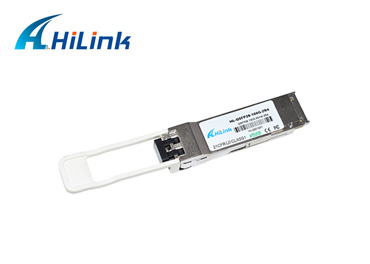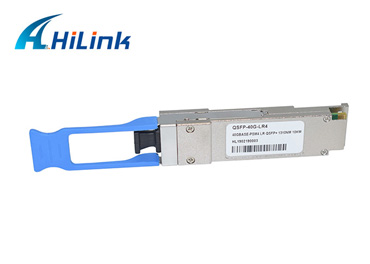Optical Module Market Size Analysis And Forecast to 2021
Aug. 11, 2022
Since 1998, optical modules have been upgraded towards higher speed and smaller package power consumption. Whether it is the earlier 1G SFP/10G SFP+/25G SFP28 optical modules or the current 40G QSFP+/100G QSFP28 optical modules, the trend of the optical module market has been in steady growth. With the popularity of 5G, cloud computing, Internet of Things, artificial intelligence and other emerging technologies, global data centres tend to develop at higher rates and larger bandwidths, which also promotes the development of optical modules towards 200G/400G/800G high-speed rates. This article will focus on analyzing the current situation and trends of optical module development and forecast the optical module market size in 2021.
Hilink 100G QSFP28 ZR4 Optical Transceiver
25G optical module maturity development
Compared to the 10G-100G upgrade path, the 25G-100G upgrade path is less costly, less power-intensive and less complex to wire. The SFP28 optical module on the market is designed for 25G Ethernet and is the equivalent of a 10G SFP+ optical module with a 2.5x increase in channel speed while maintaining the same size and lower power consumption. Now that the 25G optical module market is maturing, its price is starting to drop and it is believed that in the near future, it will reach the level of 10G optical modules. Therefore, it is a wise move to skip 10G Ethernet and deploy 25G Ethernet directly.
40G optical modules are gaining momentum
For data centres, 10G Ethernet is no longer sufficient to meet demand, so 40G Ethernet has emerged to alleviate network traffic bottlenecks. As the price of 40G optical modules has come down in recent years, some users have taken to deploying 40G Ethernet at the access and aggregation layers, as well as on the backbone of spine lobe architectures. For example, in the spine-leaf architecture, usually, 40G switches are used as spine switches to connect the uplinks of 10G leaf switches to serve 10G servers. In the future, with the acceleration of 5G network, cloud computing and big data centre construction, the market demand for optical modules will gradually shift towards 25G/50G/100G/200G/400G, and the demand for 40G optical modules will gradually decline.
40G QSFP LR4 Optical Transceiver
100G optical modules will rise soon
100G Ethernet is currently one of the most mature and fastest-growing high-speed rates. The 100G industry is becoming increasingly mature, with 100G QSFP28 SR4/LR4/ER4/ZR4/PSM4/WDM optical modules, 100G CFP/CFP2/CFP4 optical modules, 100G switches, 100G DAC/AOC, OM5, MPO/MTP fibre patch cables, etc.
400G optical modules are the mainstream of next-generation data centre
As you can see above, data centres are moving towards 100G, but the gradual elimination of low-rate optical modules is a predictable trend for data centre interconnections, and data centres will move towards higher rates in the future, such as 400G, which means that 100G Ethernet is paving the way for 400G Ethernet, and the next generation of data centres will be dominated by 400G Ethernet.
Today, most data centres around the world are still deploying 10G, 25G, 40G and 100G Ethernet, and the optical module market continues to grow positively. With the hunger for higher bandwidth and lower latency in data centres, the future deployment of 400G Ethernet is just around the corner, and demand for products such as 400G optical modules and switches will also enter an explosive period.
If you want to know more information about the best optical modules for sale, welcome to contact us.













